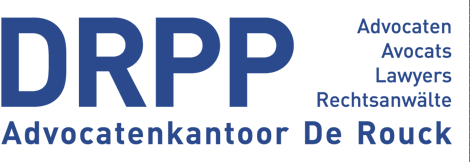
Which rules are applicable by bankruptcy?
 Anthony Clark and Associates Arizon Bankrupcy Law Firm
Anthony Clark and Associates Arizon Bankrupcy Law Firm
Points of attention in bankruptcy
1. Since 1 May 2018, new rules regarding bankruptcy are applicable. Even more than in the past there is the will to allow the bankrupt a new chance, on the other hand a smoother settlement with a lot of communication via the electronic platform Regsol so that more control can be done by those involved and where as much information as possible about the steps is displayed. in the proceedings.
Conditions for bankruptcy: permanent cessation of payment (= no longer able to pay the debts due (in the short term) due to lack of own resources or credit) and faltering of credit.
As a rule ( art. XX.105 CEL ) the bankrupt legal person is deemed to have ceased to pay as of the bankruptcy order. That date may be brought forward by the Court if serious and objective circumstances unequivocally indicate this.[1]
2. The procedure is quite fast. In contrast to the ordinary procedures, the Court determines the terms of treatment, insofar as the case is not dealt with immediately on the initiation session. The sentences are immediately enforceable. Appeal 15 days.
After bankruptcy, the curator will visit the site, make an inventory and check whether there are any irregularities.
3. All assets present at the time of the bankruptcy are immediately assembled (assets that end up in the estate as a result of a cause after the bankruptcy, are not added). After the inventory the curator can entrust the safekeeping of the archives to the (directors of the) bankruptcy. They must keep all documents for at least 7 years (except for those that do not serve as proof to third parties, these 3 years).
4. The enforcement proceedings on behalf of individual creditors are suspended.
5. The creditors must submit their claim (within the period provided for the publication of the bankruptcy in the Belgian Official Gazette - as a rule 3 months after the date of bankruptcy). The declaration is currently made electronically, in 1 of the 3 national languages or in English. Creditors with a personal security (eg surety) MUST report this within 3 months after the date of bankruptcy, otherwise it will expire. The claims are checked by the bankruptcy curator, who has the PV registered. A 2nd and 3rd verification happens after 6 and 12 months.
6. The bankrupt physical person can ask for a waiver what happens within 3 months after the bankruptcy.
7. Directors' liability exists with:
manifest gross error which contributed to the bankruptcy.[2] As a result, he can be held liable for all or part of the shortcomings. He is presumed to be liable for the net passive (K. Geens, Overview, TPR 2018, (255) 263, no. 35). The Court can do it for all or part of the shortcomings ( art. XX.225, § 2 CEL ).
If the curator intervenes in the proceedings (ie afterwards), the estate must reimburse the costs and expenses incurred by the creditor. If there is an increase in liabilities (and not bankruptcy as a result of a decrease in assets), the favorable result is divided equally between all creditors.
8. The curator can always institute this claim. The creditor can only do this if the curator doesn’t do this and has been notified of this. In the past, this could still be done for own damage. Now only for the estate (for the mass of the creditor)
- "wrongful trading": in the case of i) bankruptcy due to insufficient assets, ii) at some point before the bankruptcy the director knew or should have known that there was no "reasonable prospect" to keep the company and its activities and avoid bankruptcy and iii) the director has not acted as a normal and prudent director.
- only the curator can act.
8. The closing of the bankruptcy takes place with fewer formalities.
[1] Court of Appeal Antwerpen 27.6.2019, NJW 2020, pag. 40
[2] eg. the elimination of company assets - actual liquidation of the company - was regarded as an eg. of apparent serious error by the Court of Appeal A'pen, 15.6.2017, RPS-TRV, 2018, pg. 548
